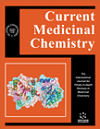
Full text loading...
We use cookies to track usage and preferences.I Understand

The precise function of DDX59 Antisense RNA 1 (DDX59-AS1) in lung adenocarcinoma (LUAD) has yet to be fully elucidated.
This study uses bioinformatics analysis and experimental validation to investigate the association between DDX59-AS1 and LUAD.
This study uses statistical analysis and database interrogation to investigate the potential association between DDX59-AS1 expression and various clinical characteristics, prognostic factors, regulatory networks, and immune infiltration in LUAD. The quantification of DDX59-AS1 expression in LUAD cell lines is conducted through the use of quantitative real-time polymerase chain reaction (qRT-PCR).
DDX59-AS1 showed significantly elevated levels of expression in patients with LUAD. High levels of DDX59-AS1 expression were found to be significantly associated with poorer overall survival (OS) in patients with LUAD (p = 0.024). Furthermore, an independent correlation was observed between high DDX59-AS1 expression (p = 0.037) and OS in LUAD patients. DDX59-AS1 was found to be involved in various pathways, including glutathione metabolism, proteasome function, and the cytosolic DNA sensing pathway, among others. A significant correlation was observed between the expression levels of DDX59-AS1 and immune cell infiltration in the context of LUAD. Notably, elevated expression of DDX59-AS1 was observed in LUAD cell lines compared to the non-cancerous Beas-2B cell line.
A significant correlation was observed between elevated DDX59-AS1 expression in patients with LUAD and adverse prognosis, alongside increased immune infiltration. These results indicate that DDX59-AS1 may function as a prognostic marker for LUAD and a potential predictor of immunotherapy response.

Article metrics loading...

Full text loading...
References


Data & Media loading...
Supplements